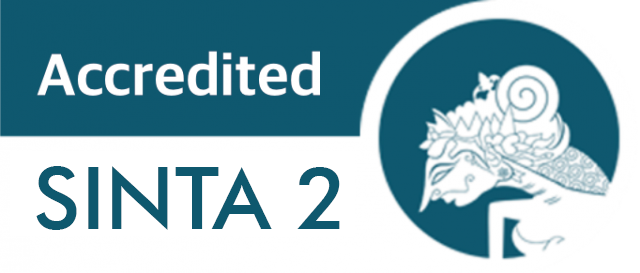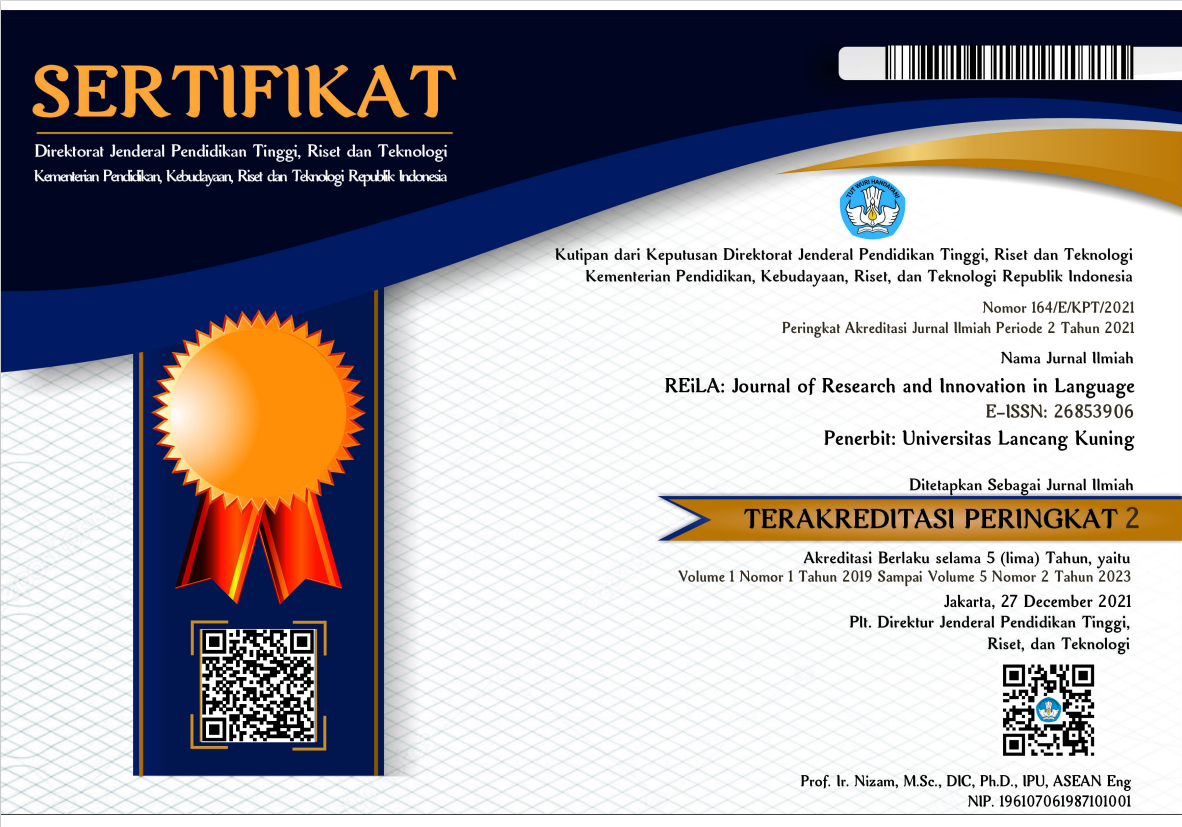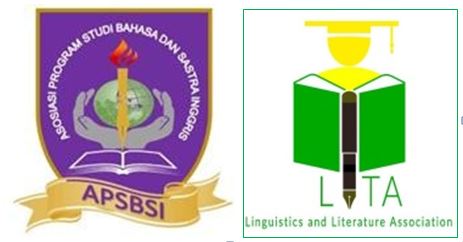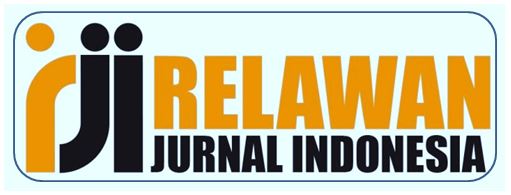Languaging, Corrective Feedback, and Writing Accuracy among Low Proficiency L2 Learners
Abstract
Low proficiency L2 learners make frequent grammatical errors and apply inappropriate English language use and writing conventions despite learning the language for years. To reduce the grammatical and non-grammatical errors in the low proficiency L2 learners’ writing, teachers provide Written Corrective Feedback (WCF). However, a strong claim on WCF's adverse effects on L2 learners’ language development has prompted mixed responses on the WCF’s effectiveness. Numerous studies on WCF's effectiveness were conducted, and the findings showed inconclusive results. The present study aims to examine the ‘Written Languaging’ (WL) effect of Written Corrective Feedback (WCF) on low proficiency L2 learners’ writing accuracy. WL is a mediational tool used to enhance the WCF’s effectiveness. The study was conducted on 47 low proficiency L2 university students for five weeks to elicit WL of WCF's effects on low proficiency L2 learners’ writing accuracy, where a multiple-case research approach was used to collect and analyze the data of the study. An error ratio was applied to measure the overall accuracy of writing. The Wilcoxon signed-rank test was used to determine whether WL's provision on the WCF affects the writing accuracy of the low proficiency L2 learners' new writing text. The finding shows that WL's provision on the WCF did not facilitate the low proficiency of L2 learners' writing accuracy because the L2 learners' writing accuracy could improve only with teachers' WCF. The study is significant to the pedagogical teaching of writing development for lower proficiency L2 learners, particularly in applying the mediational tool in the provision and processing of WCF and the complementary pedagogical strategy to WCF.
Downloads
References
Adler, P. A., & Adler, P. (2012). How many qualitative interviews is enough? In SE Baker & R. Edward (eds.), How many Qualitative Interview is Enough? Expert Voices and Early Career Reflections on Sampling and Cases in Qualitative Research. http://eprints.ncrm.ac.uk/2273/4/how_many_interviews.pdf
Al Ajmi, A. A. S. & Holi Ali, H. I. (2014). Collaborative writing group assignments in an EFL/ESL classroom. English Linguistics Research, 3(2), 1-17.
Arnold, E. (2008). Measurements and perceptions of writing development: Omani academic writers of English. Indonesian Journal of English Language Teaching, 4(1), 42-55. http://dx.doi.org/10.25170%2Fijelt.v4i1.143
Bernard, H.R. (2011). Research methods in anthropology: Qualitative and quantitative approaches (5th ed.). Altamira Press.
Bitchener, J. (2008). Evidence in support of written corrective feedback. Journal of Second Language Writing, 17, 102-118.
Bitchener, J. & Ferris, D.R. (2012). Written corrective feedback in second language acquisition and writing. Routledge Taylor and Francis Group.
Bitchener, J. & Knoch, U. (2008). The value of written corrective feedback for migrant and international students. Language Teaching Research, 12(3), 409-431.
Bitchener, J. & Storch, N. (2016). Written corrective feedback for L2 development. Multilingual Matters.
Bitchener, J., Young, S. & Cameron, D. (2005). The effective of different types of corrective feedback on ESL student writing. Journal of Second Language Writing, 14, 191-205. https://doi.org/10.1016/j.jslw.2005.08.001
Braun, V., & Clarke, V. (2006). Using thematic analysis in psychology. Qualitative Research in Psychology, 3, 77–101. https://doi/10.1191/ 1478088706qp063oa.
Busch, D. (2010). Pre-service teacher beliefs about language learning: the second language acquisition course as an agent for change. Language Teaching Research, 14(3), 318-337. https://doi.org/10.1177%2F1362168810365239
Buyukyavuz, O. & Cakir, I. (2014). Uncovering the motivating factors behind writing in English in an EFL context. Anthropologist, 18(1), 153-163. https://doi.org/10.1080/09720073.2014.11891531
Chandler, J. (2003). The efficacy of various kinds of error feedback for improvement in the accuracy and fluency of L2 student writing. Journal of Second Language Writing, 12, 267-296. https://doi.org/10.1016/S1060-3743(03)00038-9
Chen, Y.M. (2002). The problems of university EFL writing in Taiwan. The Korea TESOL Journal, 5(1), 59-79.
Creswell, J.W., & Clark, V.L.P. (2011). Designing and conducting mixed methods research (2nd ed.). SAGE Publications, Inc.
Daud, NSM (2012). Developing critical thinking skills in tertiary academic writing through the use of an instructional rubric for peer evaluation [Unpublished PhD Thesis]. The University of Canterbury.
Duff, P. (2006). Beyond generalizability, contextualization, complexity, and credibility in applied linguistic research. In M. Chaulhoub-Deville, C. Chapelle & P. Duff (Eds.), Inference and generalizability in Applied Linguistics. Multiple perspectives (pp. 65-96). Amsterdam: John Benjamins.
Egi, T. (2007). Recasts, interpretations, and L2 development. In A. Mackey (Ed.), Conversational interaction in second language acquisition: A series of empirical studies (pp. 249-267). Oxford University Press.
Ellis, R. Sheen, Y., Murakami, M. & Takashima, H. (2008). The effects of focused and unfocused written corrective feedback in English as a foreign language context. System, 36, 353-371. https://doi.org/10.1016/j.system.2008.02.001
Ene, E. & Kosobucki, V. (2016). Rubrics and corrective feedback in ESL writing: A longitudinal case study of an L2 writer. Assessing Writing, 30, 3-20. https://doi.org/10.1016/j.asw.2016.06.003
Erkan, D. Y., & Saban, A. I. (2011). Writing performance relative to writing apprehension, self-efficacy in writing, and attitudes towards writing: A correlational study in Turkish tertiary-level EFL. Asian EFL Journal, 5(4), 164-192.
Ferris, D.R. & Roberts, B. (2001). Error feedback in L2 writing classes: How explicit does it need to be? Journal of Second Language Writing, 10(3), 161-184. https://doi.org/10.1016/S1060-3743(01)00039-X
Ferris, D.R. (2010). Second language writing research and written corrective feedback in SLA. Studies in Second Language Acquisition, 32, 181-201. https://doi.org/10.1017/S0272263109990490
Ferris, D.R., Liu, H., Sinha, A., & Senna, M. (2013). Written corrective feedback for individual L2 writers. Journal of Second Language Writing, 22, 307-329. https://doi.org/10.1016/j.jslw.2012.09.009
Forrester, B. (2014, September). Student responses to written corrective feedback. Paper presented at ASILE Conference 2014, Bali, Indonesia. http://www.ialf.edu/asile/BintariForrester-studentResponsestoWrittenCorrectiveFeedback.pdf
Ganapathy, M., Tan, D. A. L., & Phan, J. (2020). Students’ perceptions of teachers’ written corrective feedback in the Malaysian ESL classroom. Malaysian Journal of Learning and Instruction, 17(2), 103-136. https://doi.org/10.32890/mjli2020.17.2.4
Gower, R., Philips, D. & Walters, S. (1995). Teaching practice handbook. Oxford: Heinemann.
Hisham, D. (2008). Needs analysis of Arab graduate students in the area of EAP: a case study of the ICT program in UUM [Unpublished Minor Thesis]. University Utara Malaysia.
Hyland, F. (1998). The impact of teacher written feedback on individual writers. Journal of Second Language Writing, 7(3), 255-286. https://doi.org/10.1016/S1060-3743(98)90017-0
Hyland, K. & Hyland, F. (2006). Contexts and issues in feedback on L2 writing: an introduction. In K. Hyland & F. Hyland (Eds.), feedback in second language writing: Contexts and issues (pp. 1-18). Cambridge University Press.
Jerry, C., Mohd Jan, J., & Samuel, M. (2013). Improving students’ writing: Why is there a need for teacher feedback. Malaysian Journal of Languages and Linguistics, 2, 44-55. https://doi.org/10.24200/mjll.vol2iss1pp44-55
Jonsson, A. (2012). Facilitating productive use of feedback in higher education. Active Learning in Higher Education, 14(1), 63-76. https://doi.org/10.1177%2F1469787412467125
Karim, K. (2013). The effects of direct and indirect written corrective feedback (CF) on English-as-a-second-language (ESL) students’ revision accuracy and writing skills [Unpublished PhD Thesis]. University of Victoria.
Kassim, A. & Ng, LL (2014a). Investigating the efficacy of focused and unfocused corrective feedback on the accurate use of prepositions in written work. English Language Teaching, 7(2), 119-130.
Kassim, A. & Ng, LL (2014b). The roles of collaborative dialogue in enhancing written corrective feedback efficacy. Malaysian Journal of ELT Research, 10(1), 16-30.
Khorasani, M.R., & Sadzadeh, A. (2015). The effect of direct and peer feedback on accuracy of EFL learners’ written performance. Modern Journal of Language Teaching Methods, 5(2), 296-308.
Kim, J.H. (2013). Learner understanding of written corrective feedback and its relationship with immediate uptake and retention in EFL classroom. English Teaching, 68(3), 109-130.
Kim, J.H., & Han, Z.-H. (2007). Recasts in communicative EFL classes: do teacher intent and learner interpretation overlap? In A. Mackey (Ed.), Conversational interaction in second language acquisition: A series of empirical studies (pp. 269-297). Oxford University Press.
Kim, S. (2012). Measuring linguistic accuracy in an EFL writing class: an electronic communication channel. Linguistic Research, 29(3), 665-688.
King, N. (2004). Using templates in the thematic analysis of text. In C. Cassell & G. Symon (Eds.), Essential guide to qualitative methods in organizational research (pp. 257–270). Sage.
Knouzi, I., Swain, M., Lapkin, S. & Brooks, L. (2010). Self-scaffolding mediated by languaging: microgenetic analysis of high and low performance. International Journal of Applied Linguistics, 20, 23-49. https://doi.org/10.1111/j.1473-4192.2009.00227.x
Krashen, SD (1982). Principles and practice in second language acquisition. Oxford: Pergamon Press.
Krashen, SD (1984). Writing, research, theory and applications. Pergamon Press.
Lantolf, J.P. & Thorne, S.L. (2006). Sociocultural Theory and the genesis of second language development. Oxford University Press.
Lee, I. (2013). Research into practice: Written corrective feedback. Language Teaching, 46(1), 108-119.
Mackey, A., Gass, S., & McDonough, K. (2000). How do learners perceive interactional feedback? Studies in Second Language Acquisition, 22, 471-497. https://doi.org/10.1017/S0272263100004010
Malaysian University English Test (MUET): Regulations, Test Specifications, Test Format and Sample Questions (2015). http://www.mpm.edu.my/download_MUET/MUET_Test_Specification_2015VersiPortal.pdf
Mastan, M. E., & Maarof, N. (2014). ESL learners’ self-efficacy beliefs and strategy use in expository writing. Procedia-Social and Behavioral Sciences, 116, 2360-2363. https://doi.org/10.1016/j.sbspro.2014.01.573
McMillan, J.H. (2011). Educational research: fundamentals for the consumer (6th ed.). Pearson.
Moradian, M. R., Miri, M., & Nasab, M. H. (2017). Contribution of written languaging to enhancing the efficiency of written corrective feedback. International Journal of Applied Linguistics, 27(2), 406-421. https://doi.org/10.1111/ijal.12138
Negueruela, E. (2008). Revolutionary pedagogies: learning that leads (to) second language development. In J.P. Lantolf and ME Poehner (Eds.), Sociocultural Theory and the Teaching of Second Languages (pp. 189-227). Equinox.
Normazidah, C.M., Koo, Y.L. & Hazira, A. (2012). Exploring English language learning and teaching in Malaysia. GEMA Online™ Journal of Language Studies, 12(1), 35-51.
Razali, R. & Jupri, R. (2014). Exploring teacher written corrective feedback and student revisions on ESL students’ writing. IOSR Journal of Humanities and Social Sciences, 19(5), 63-70.
Santa, T. (2006). Dead letters: error in composition, 1873-2004. Hampton Press.
Silver, R. & Lee, S. (2007). What does it take to make a change? Teacher feedback and student revisions. English Teaching: Practice and Critique, 6(1), 25-49.
Singh, C.K.S., Singh, A.K.J., Nur Qistina, A.R., & Ravinthar, T. (2017). Grammars errors made by ESL tertiary students in writing. English Language Teaching, 10(5), 16-27.
Skehan, P. (1996). A framework for the implementation of task-based instruction. Applied Linguistics, 17(1), 38-62. https://doi.org/10.1093/applin/17.1.38
Starman, A.B. (2013). The case study as a type of qualitative research. Journal of Contemporary Educational Studies, 1, 28-43.
Storch, N. (2010). Critical feedback on written corrective feedback research. International Journal of English Studies, 10(2), 29-46. https://doi.org/10.6018/ijes/2010/2/119181
Suzuki, W. (2009a). Languaging, direct correction and second language writing: Japanese university students of English. [Unpublished PhD Thesis]. University of Toronto.
Suzuki, W. (2009b). Improving Japanese university students’ second language writing accuracy: Effects of languaging. Annual Review of English Education in Japan, 20, 81-90. https://doi.org/10.20581/arele.20.0_81
Suzuki, W. (2012). Written languaging, direct correction, and second language writing revision. Language Learning, 62(4), 1110-1133. https://doi.org/10.1111/j.1467-9922.2012.00720.x
Swain, M. (2006a). Languaging, agency and collaboration in advanced second language learning. In H. Byrnes (ed.), Advanced Language Learning: The Contributions of Halliday and Vygotsky (pp. 95-108). Continuum.
Swain, M. (2011). Cognitive and affective enhancement among older adult: The role of languaging. Australian Review of Applied Linguistics, 36(1), 4-19.
Swain, M., Lapkin, S., Knouzi, I., Suzuki, W., & Brooks, L. (2009). Languaging: University students learn the grammatical concept of voice in French. The Modern Language Journal, 93, 5-29. https://doi.org/10.1111/j.1540-4781.2009.00825.x
Swain. M., Kinnear, P. & Steinman, L. (2011). Sociocultural theory in second language education: an introduction through narratives (1st Ed). Multilingual Matters.
Truscott, J. (1996). The case against grammar correction in L2 writing classes. Language Learning, 46(2), 327-369. https://doi.org/10.1111/j.1467-1770.1996.tb01238.x
Truscott, J. (1999). The case for "the case for grammar correction in L2 writing classes": a response to Ferris. Journal of Second Language Writing, 8(2), 111-122.
Truscott, J. (2007). The effect of error correction on learners’ ability to write accurately. Journal of Second Language Writing, 16, 255-272. https://doi.org/10.1016/S1060-3743(99)80124-6
Truscott, J., & Hsu, A. Y. (2008). Error correction, revision, and learning. Journal of Second Language Writing, 17, 292–305. https://doi.org/10.1016/j.jslw.2008.05.003
van Beuningen, C.G., De Jong, N.H., & Kuiken, F. (2012). Evidence on the effectiveness of comprehensive error correction in second language writing. Language Learning, 62, 1-41.
Voon Foo, C.T. (2007). The effects of the process-genre approach to writing instruction on the expository essays of ESL learners in a Malaysian secondary school [Unpublished PhD Thesis]. Universiti Sains Malaysia.
Ward, C.S. & Gramer, M.F. (2015). Q: Skills for success, reading and writing. Oxford University Press.
Watanabe, Y. (2014). Collaborative and independent writing: Japanese university English learners’ processes, texts and opinions [Unpublished PhD Thesis], Ontario Institute of Studies in Education, the University of Toronto.
Wells, G. (1999) Dialogic Inquiry: Towards a Sociocultural Practice and Theory of Education. Cambridge: Cambridge University Press. https://doi/10.1017/CBO9780511605895
Williams, J.G. (2003). Providing feedback on ESL students’ written assignments. The Internet TESL Journal, 9(10), 1-5.
Wolfe-Quintero, K., Inagaki, S., & Kim, H.Y. (1998). Second language development in writing: Measures of fluency, accuracy, and complexity (Tech. Report No. 17). University of Hawaii Press.
Yin, R.K. (2014). Case Study Research: design and methods (5th ed.). SAGE Publications, Inc.
Zainal, Z. (2007). Case study as a research method. Jurnal Kemanusian, 9, 1-6.










